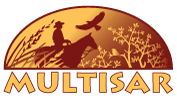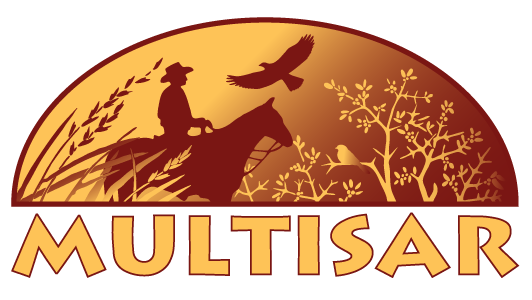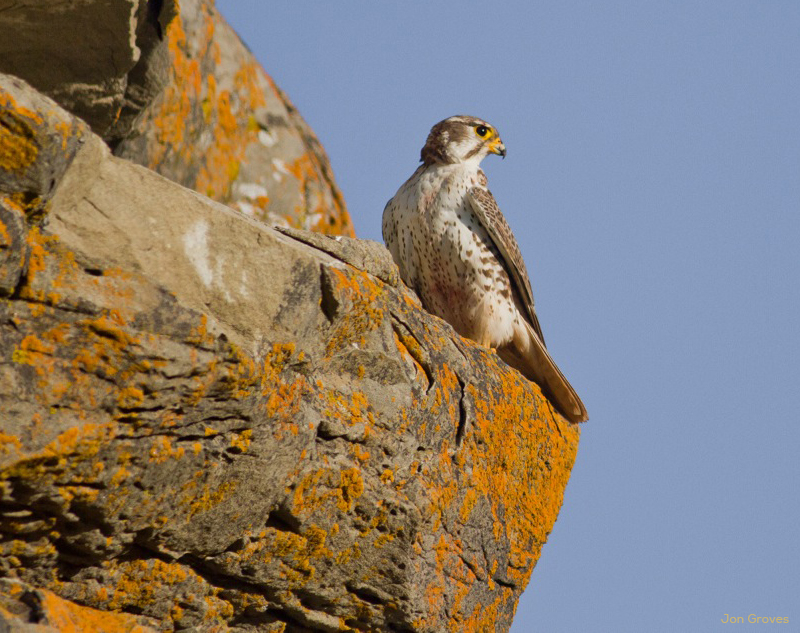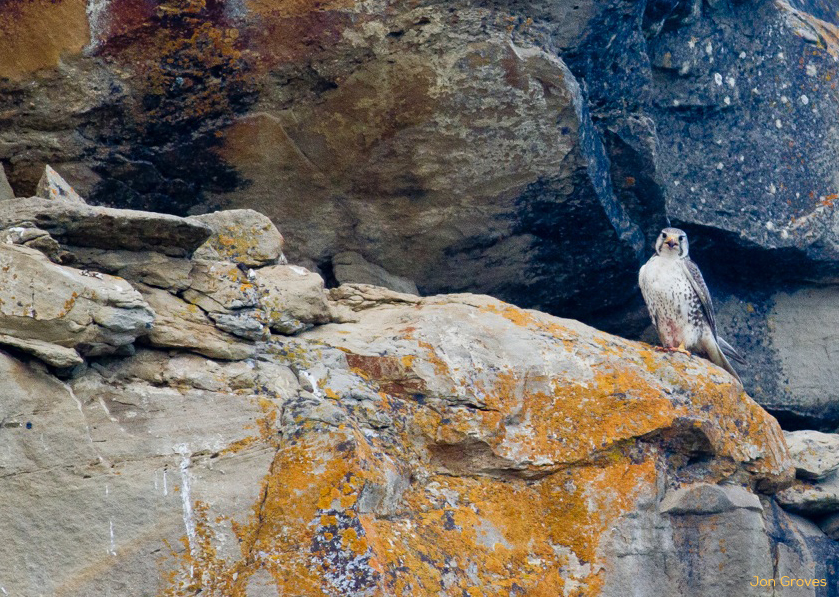Prairie Falcon
Falco mexicanus
Habitat:
Open areas with rocky cliffs for nesting, usually along rivers in the prairies. Foraging habitat is open grasslands and nearby agricultural fields with low vegetation and ground squirrels.
Hairy Armpits
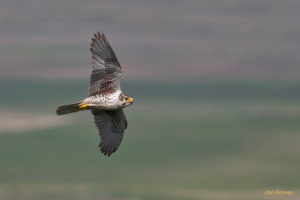
A prairie falcon can be identified in flight by its dark “armpits”.
Prairie Falcons are dull brownish birds, but a good way to identify a Prairie Falcon is to look for dark patches under the wings as it flies overhead. These dark patches give the birds the appearance of having hairy armpits.
Living on the Edge
Prairie Falcons nest in precarious places – usually on cliff ledges or in crevices and occasionally in the abandoned nest of other cliff-nesting birds. They vigorously defend their nesting territories by screaming raucously and dive-bombing intruders.
A Taste for Squirrels
Richardson’s Ground Squirrels make up a large portion of the Falcon’s diet in the spring and summer. Prairie Falcon reproductive success is tied to squirrel abundance, with more chicks surviving in years and locations where ground squirrel populations are high.
Year-round Residents
Unlike many falcons, instead of heading south for the winter, most Prairie Falcons remain in Alberta. Not very much is known about their winter foraging habits, although they likely prey on a variety of birds and small mammals.
Population
The most recent population assessment, in 2002, estimated 200-250 pairs in Alberta. Since then, the population is thought to have been stable, but with some local declines. While there are a handful of Prairie Falcons in British Columbia and Saskatchewan, the bulk of the Canadian population resides in Alberta.
Current Threats
- Loss of grassland habitats that support healthy ground squirrel populations. Prairie Falcons need a large number of ground squirrels to feed their young and reproductive success is tied to ground squirrel populations.
- Human control of ground squirrels, resulting in a reduced food supply for Prairie Falcons.
- Loss and disturbance of cliff habitats, especially as the number of suitable nest sites is already limited. Flooding for reservoirs has resulted in the loss of some traditional Prairie Falcon nest sites.
- Natural events, such as slumping, can also impact traditional nesting sites.
Species@Risk Quiz
Test your knowledge about Alberta’s grassland species at risk
Prairie Falcon
Question 1 |
Prairie Falcons can be identified by their:
Bright plumage | |
Dark patches on the underside of their wings | |
Rusty tail feathers |
Question 2 |
Over half of the Prairie Falcon’s summer diet consists of:
Mice and voles | |
Small birds | |
Richardson’s Ground Squirrels |
Question 3 |
Prairie Falcons nest:
On the ground in native grasslands | |
On telephone poles, pylons and other tall structures | |
On ledges and in crevices on tall cliffs |
Question 4 |
Alberta’s Prairie Falcons usually spend their winters in:
Alberta
| |
Texas and Mexico | |
Hawaii |
Public
- Keep at least 1 km away from Prairie Falcon nests during the nesting season (April – June).
- To watch and enjoy Prairie Falcons in action, visit Provincial Parks with cliffs, such as Writing-on-Stone Provincial Park or Dinosaur Provincial Park.
- Support native grassland habitat by choosing grass-fed meat in the grocery store.
- Voice your support for native grassland conservation with your political leaders.
- Educate yourselves and your family about Prairie Falcons and their role in the grassland ecosystem.
Landowners
- Hang on to your native grasslands and cliff habitats.
- Keep at least 1 km away from known Prairie Falcon nests during the nesting season (April – June).
- Tolerate some ground squirrels. They are one of the primary food sources for Prairie Falcons and other Species at Risk. Prairie Falcons will naturally help to keep them under control.
- Consider restoring some of your degraded grasslands or marginal croplands with native vegetation typical of your area.
- Contact MULTISAR to discuss management practices that might be beneficial to Prairie Falcons on your property.
- Talk to your children and neighbours about the privilege of having Prairie Falcons on your land.
What MULTISAR Does
- Records and reports Prairie Falcon observations and nest locations.
- Cooperates with landowners to restore cropland to native grassland at appropriate locations.
- Provides information about Prairie Falcons and their habitat and recommendations for management practices compatible with their needs.
